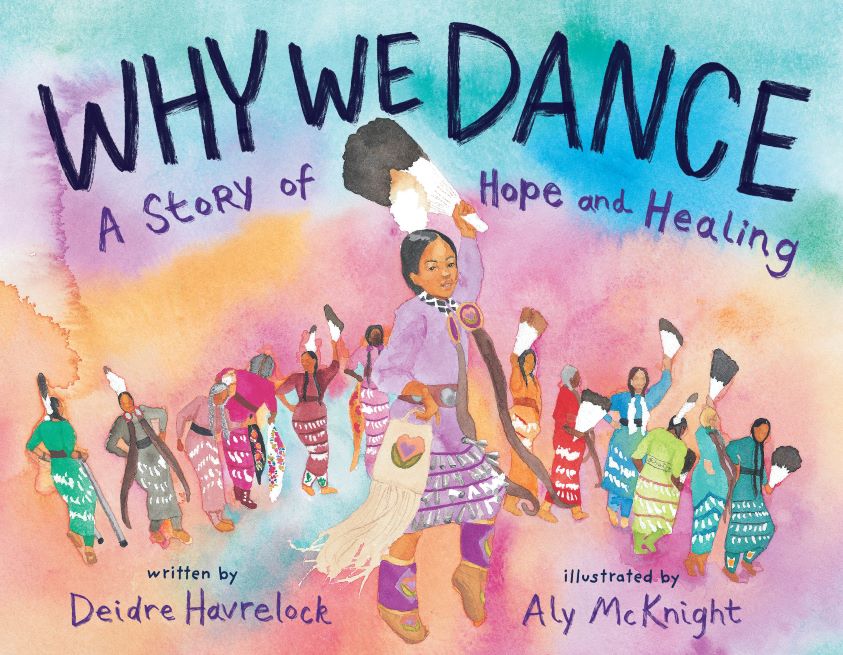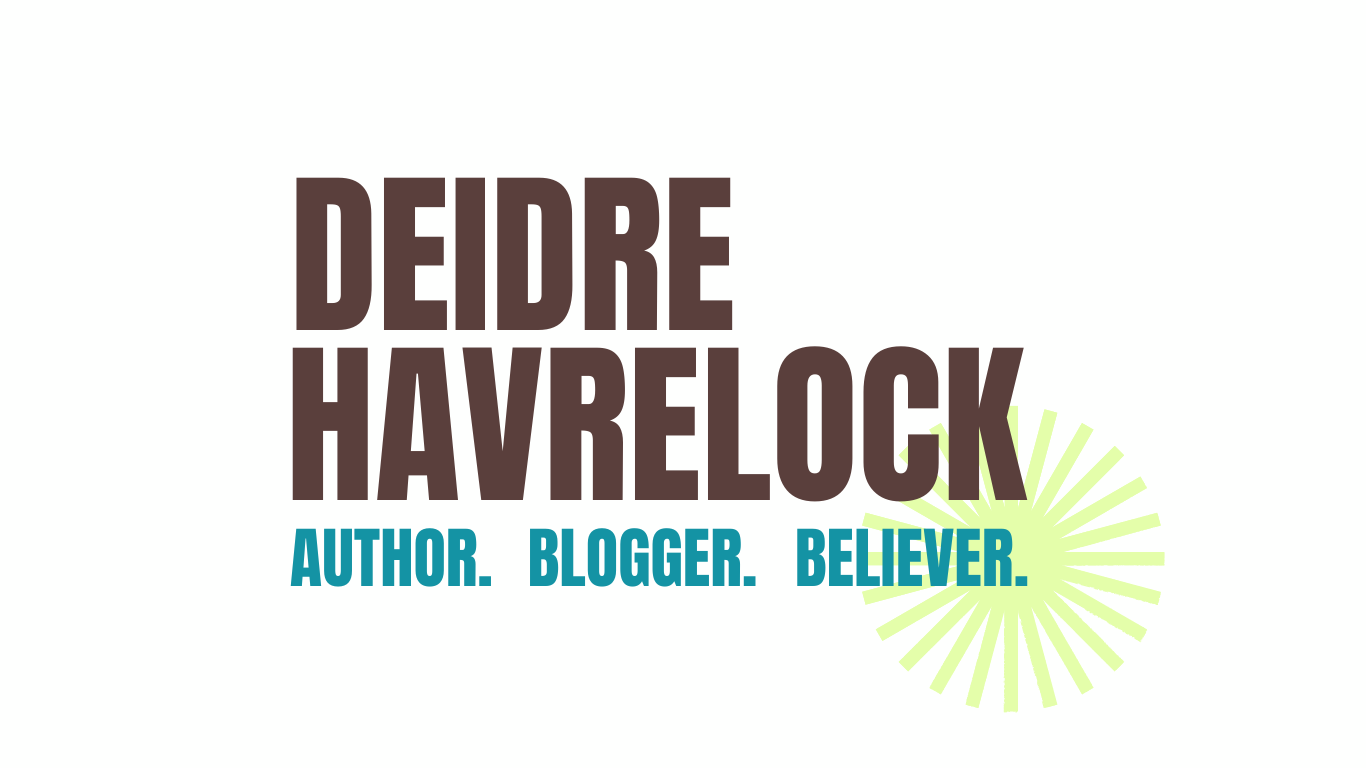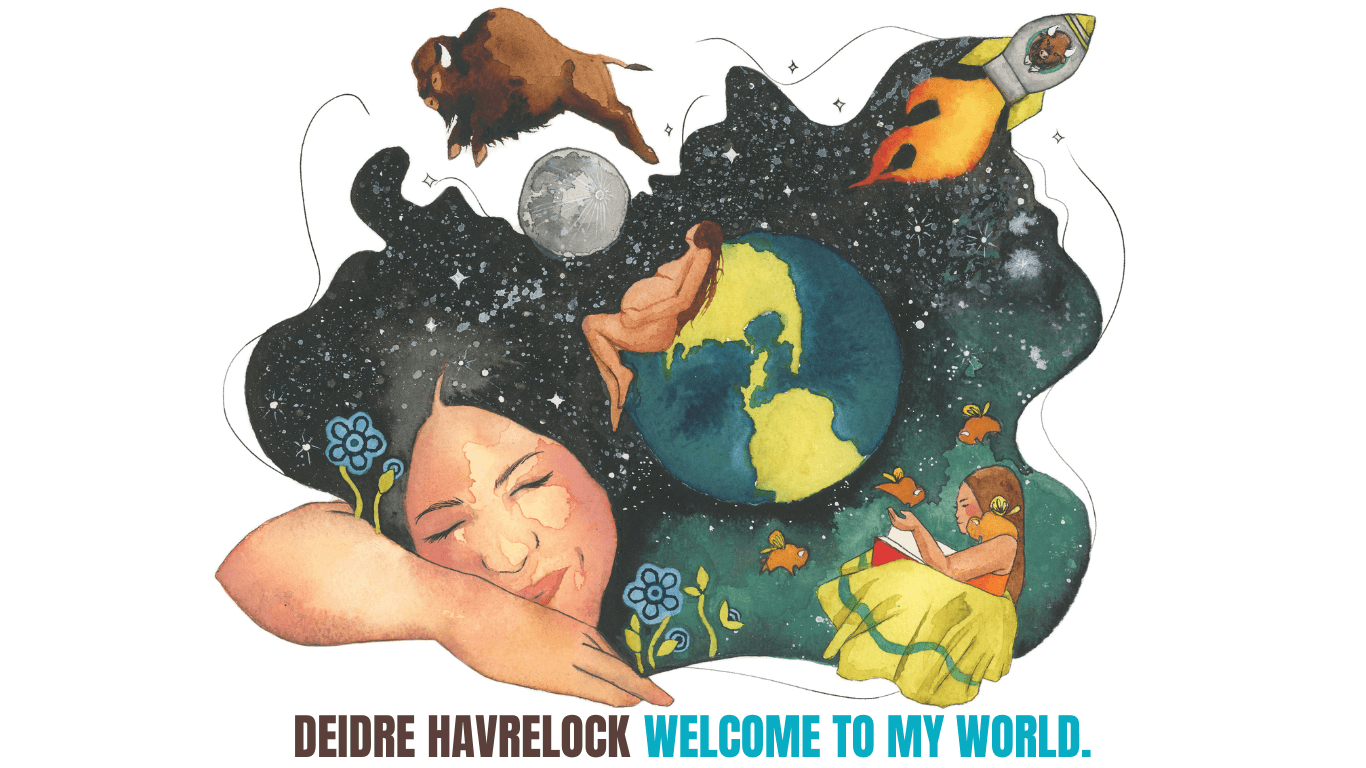Why We Dance — February 6, 2024 with Abrams Books for Young Readers, written by Indigenous children’s author Deidre Havrelock and illustrated by Aly McKnight
A Junior Library Guild Gold Standard Selection
Why We Dance is a Read Across America book for 2024!
_________________________________________________________________________________________________________________________
AVAILABLE NOW
FIND MORE ON
Goodreads | Amazon | Barnes & Nobel | Indie Bound | Chapters-Indigo
REVIEWS
Preparations are underway for a special day for our young protagonist and her cousin. Mom and Auntie have laid out the Jingle Dresses and organized the regalia, making sure the belts, buckles, and earrings glimmer and shine. Next, makeup is applied and hair is smoothed and braided, all with a touch of glitter. Dad has packed the lunch and now the family is off, the girls working through their nerves for the big performance at the family gathering. Finally, the drums begin to “Rum-Rum-Tum,” and the ceremony starts, with dresses jingling “Tink-Tink-Tink-Tink” as the girls dance in gratitude to the Creator and in honor of their ancestors and those who cannot dance. The specifics and cultural context of the Jingle Dress are left to the author’s note, allowing the text to focus fully on the emotion of the day, from the girls’ excitement and nervousness to the entire community’s love of and devotion to a tradition that honors elders and ancestors while growing contemporarily. Rhythmic language and dappled watercolor illustrations work together to create a gentle but absorbing sense of motion, and the close-ups on sparkling regalia and the Jingle Dresses highlight their significance to the event. Figures have a soft looseness and subtly blend into background, evoking a feeling of connectedness throughout each scene. Share this alongside Thundercloud’s Finding My Dance (BCCB 10/22) for a musical lesson in modern Indigenous dance. Author and illustrator’s notes provide more information on the Jingle Dress Dance and the powwow circle.
The Bulletin for the Center of Children’s Books
Recommended (R)
Why We Dance: A Story of Hope and Healing.
By Deidre Havrelock. Illus. by Aly McKnight
Feb. 2024. 40p. Abrams, $18.99 (9781419756672). K–Gr. 3
As the title suggests, there’s often history behind tradition. Here, readers are invited to share in the story of the Jingle Dress dance of the Anishinaabe people through this gentle, touching narrative. Two cousins are in the throes of preparation. Their dresses, one traditional, one contemporary, require some repair and organization, and everyone in the family is involved. Missing pieces must be replaced, buckles and cones must be polished, hair braided, makeup applied, steps practiced, tummy butterflies quelled. There’s fun with friends at the powwow before the dance begins. When it is time to dance, the girls are reminded to keep the reason in mind: to honor those who can’t. The subtlety of the text is beautifully complemented with watercolor illustrations that depict a close, strong, intergenerational community steeped in the importance of valuing tradition even while tradition evolves with time. The author’s and illustrator’s notes describe the history and significance of the Jingle Dress dance with some historical and contemporary context. Why We Dance should be part of all readers’ repertoires.
A Native child takes part in the Jingle Dress dance. Preparing for a powwow is a family affair: Regalia is mended, hair is braided, and bannock sandwiches are packed for lunch in anticipation of breaking the fast. In this spirited ode to Jingle Dress dancing, Havrelock (Saddle Lake Cree Nation) follows one girl’s journey as she takes part in this Anishinaabe ceremonial dance with her community. Evocative watercolors by McKnight (Shoshone-Bannock) bring these healing, ceremonial garments to life, from their rainbow of colors to the tin cones that produce the iconic “TINK-TINK-TINK-TINK” sounds of the dance. Helpful backmatter notes that though there are many stories about the origins of the Jingle Dress dance, all of them describe it as a response to the influenza pandemic of 1918-19 that “resulted in the healing of a sick child.” Indeed, the young narrator states that “we dance for those who can’t.” With its moving illustrations, this reverent celebration of an important Indigenous ritual stands out. Young readers will be drawn in by the mesmerizing art and the narrator’s courage to dance despite all “the butterflies in my stomach.” Several performers and spectators have visible disabilities. A powerful story that will have hearts beating in time with the pounding drums and dancers’ bounce-steps.
Kirkus Starred Review
A young girl and her family eagerly prepare for and take part in the Jingle Dress dance, an Anishinaabe tradition established during the 1918–1919 influenza pandemic. Havrelock’s (Saddle Lake Cree Nation) straightforward text incorporates vivid sensory imagery (“buckles shine, beads glimmer”; “Mom’s warm fingers slide through my hair”) and realistic details (“Everyone gets a big shot of hair spray!”), and evokes both the contemporary and the traditional while capturing the narrator’s excitement. McKnight’s (Shoshone-Bannock) colorful watercolor and graphite illustrations focus on the family and the regalia, and include such details as the different colors of black in a girl’s braids; the variety of Indigenous people’s hair colors and textures; the jingles on dresses that sway so convincingly you can almost hear them; and a red handprint covering the mouth of a woman watching the dance, signifying her solidarity with Missing and Murdered Indigenous Women, Girls, and Two-Spirit People. A moving portrayal of how Jingle Dress dancers “dance for those who can’t.” Back matter gives more information about this century-old ritual of healing and thanks, including its significance in the wake of COVID-19 with its devastating effect on Native communities. LARA K. AASE
Horn Book Magazine, March/April 2024






